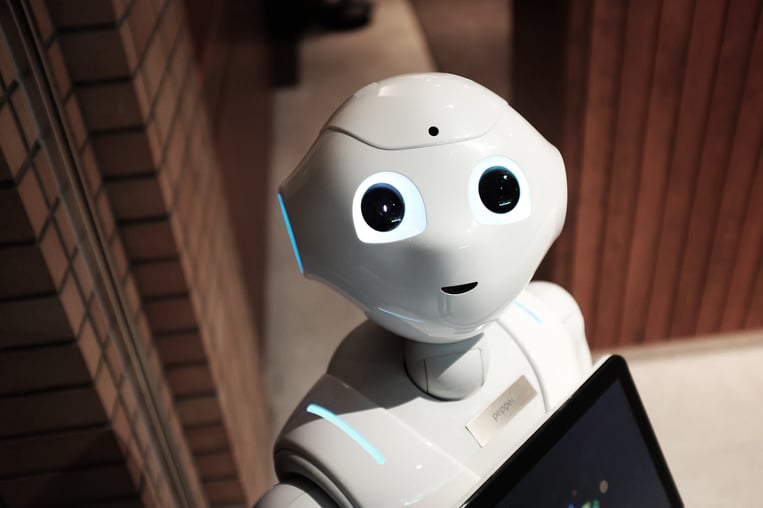Would you like to work with a robot? A questionnaire published in Finland in summer 2018 asked Finns exactly this question. A third of respondents then affirmed that a robot was a pleasant workmate. I stopped to think how they had understood the question. The faces of robotics are diverse.
 E.g. in healthcare your robot workmate can be the most human of all robots. Its core competence may be interaction with humans.
E.g. in healthcare your robot workmate can be the most human of all robots. Its core competence may be interaction with humans.What are then real-life robot workmates?
If you work at a call centre or customer service, your new workmate is robot Reijo who answers tens of thousands of phone calls simultaneously or even makes them.
If you used to work at a travel agency reception desk, your new workmate Selma may already have replaced your earlier job. Using her several tens or even hundreds of simultaneously operating “hands”, Selma automatically flips through the web. With artificial intelligence and algorithms, she combines the best offers serving millions of simultaneous users in all the languages of the world.
Or do you work in a car repair shop? Combining spare parts, availability of service work performer and vehicle manufacturer’s work instructions in a way that enables appointment booking and even a pre-order price offer requires juggling skills from a human. No problem, your new workmate Einari performs this magic trick within a few tens of a second, even literally in the middle of the night.
Reijo, Selma and Einari do not actually have faces other than in promotional videos. As workmates, they are software robots. This means that they consist of software code on computers located in data centres. Both they and their physical robot counterparts utilise – more or less – artificial intelligence in their tasks.
Robot workmate in physical work
If you are a white-collar or a blue-collar worker in a factory, a robot as a workmate is more easily recognisable by its physical appearance. Those who fancy a robot for bringing joy or keeping company during work will be disappointed. Making robots safe to work among people is often more difficult than teaching the work itself or enabling learning. Therefore, if your workmate is industrial robot Tero, it will very probably work in an isolated room.
Liini production line robots may also have physical embodiments with their “brains”, or the strongest artificial intelligence, connected to the entire production line. For example, if different products are periodically manufactured on the same production line, production schedule optimisation and modification of manufacturing cells for the current production is performed by artificial intelligence which simultaneously controls physical robots responsible for production logistics.
Do you work in healthcare, in the field of welfare technology, education or tourism? In this case, your robot workmate can be the most human of all robots. Its core competence may be interaction with humans. For example, its task could be to influence people’s motivation, give feedback and show empathy.
Do robots take away your job?
Robots change our traditional work and often completely eliminate work tasks or professions. Here, the history repeats itself just like it has done already centuries ago without no more drama. According to a research, robots will take over more than 70 million jobs from humans during the next decade but simultaneously create more than 130 million new jobs.
A robot is a very nice workmate at least for that minority of people who see change as an opportunity.
Read more
Pinja’s robot serves visitors at this year’s Subcontracting Trade Fair
Back to the Pinja Blog
Categories
- Career at Pinja (68)
- Manufacturing (48)
- Knowledge Management (45)
- Production Development (44)
- Software Partnership & Tools (42)
- Sustainability (37)
- Wood and Forestry (37)
- Bioenergy and Recycling (27)
- IT Support and Outsourcing (24)
- Ecommerce (23)
- Maintenance (22)
- Artificial Intelligence and Machine Learning (15)
- Public Services (9)
- Compliance (1)
